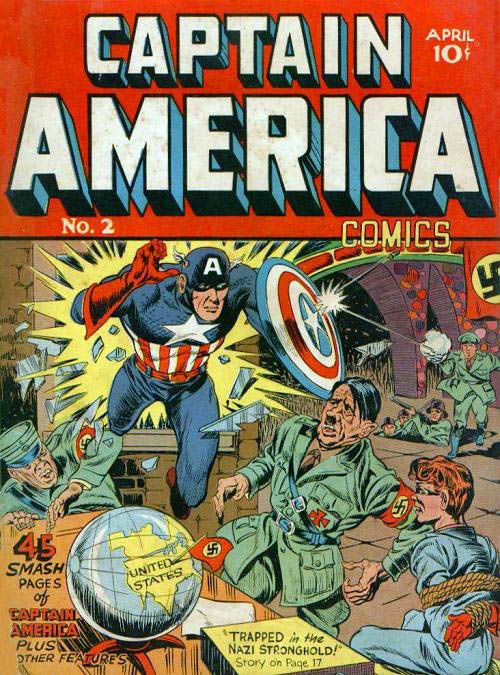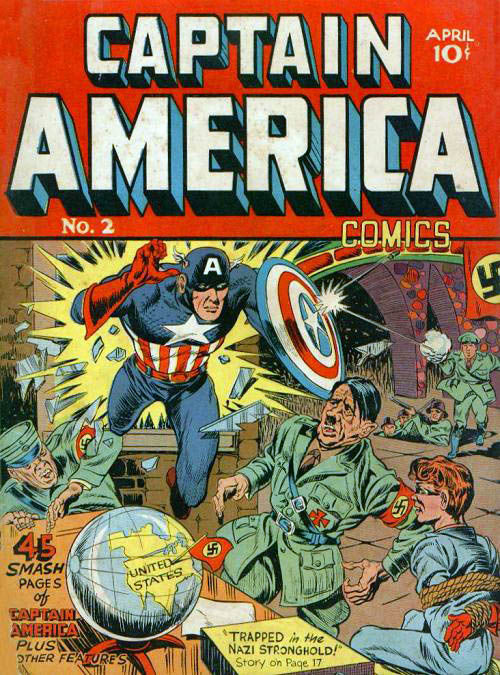Is it Time for Another Captain America?
Posted on March 23, 2010 at 4:19 pm
This week’s announcement that Chris Evans (“The Fantastic Four”) will star in a new “Captain America” movie makes this the right moment to think about the history and meaning of the character. Never as iconic and popular as Superman or Batman, Captain America’s status has risen and fallen according to the political sentiments of the era. Unsurprisingly, he first appeared at a time of the most vibrant patriotism, the beginning of WWII. The character was Steve Rogers, a sickly young man who was given an experimental Super-Soldier Serum and “Vita-Ray” treatment that made him very strong and healthy in order to aid the United States war effort. His costume was inspired by the American flag. He has no superpowers but he carries a red, white, and blue indestructible shield. Captain America was often portrayed as fighting for the Allies and he was Marvel’s most popular hero during the war. 
But his popularity waned in the Cold War era. His explicit Americanism did not fit either the complacence and materialism of the 1950’s or the Cold War concerns. He disappeared from comics until 1964. Interestingly, a character who appeared to be Captain America was featured in a comic book story starring the Fantastic Four’s Johnny Storm (also played by Evans on screen). But that character turned out to be a villain in disguise. The unabashed pro-Americanism of the character did not fit well with the turbulence of the 1960’s and Captain America himself became so disillusioned with the government following Watergate that he took on another persona for a while. In another episode he led a protest against government oppression of superheroes that was a commentary on infringement of civil rights. The character has had many different iterations and the Steve Rogers alter ego has died and been brought back and been in suspended animation and been brought back as the Captain America identity has shifted as well for a while being taken over by Roger’s one-time sidekick. There is also a black Captain America named Isaiah Bradley, whose origin was explicitly inspired by the real-life Tuskegee experiments. He was injected with the serum before Rogers.
Chris Evans was one of the best things about the uneven “Fantastic Four” movies and I look forward to seeing where he takes this character.

